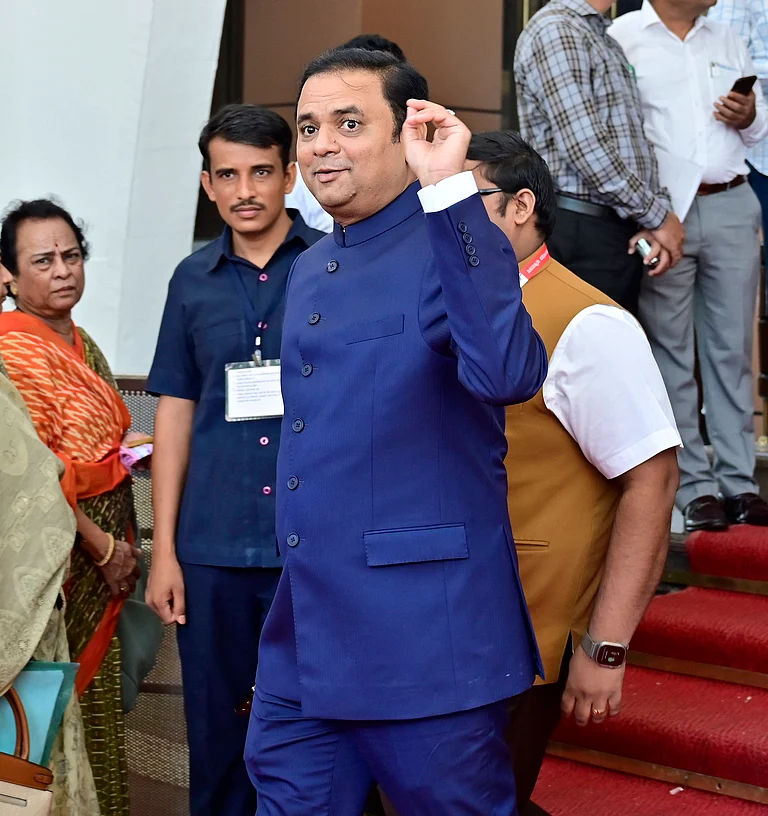What would be a good starting point? Badnaam Basti? This was a film from 1971 that had a homosexual couple, two men, and did not seek to laugh at them, nor demonise them. Since then we have had My Brother Nikhil and Dostaana, but is there a line that can be drawn from one to the other? Can one begin with Love, Sex Aur Dhokha? That was truly an original film that located love in the time of the post-modern; it ain’t love until it has been recorded somewhere and turned into a figment of virtual reality. But take the end of Daag, 1973, in which it seems as if the three corners of the love triangle are about to implode and end in a centroid, which, in France, might be described as a menage a trois.
This is why one must be careful when dealing with something as sinusoidal as Hindi cinema. It does not progress. It does not allow itself to be plotted. It takes a few steps forward and then, horrified at its own daring, backs off again.
But how can it be otherwise? Every creative person in India lives with the fear of the goonda. Make a film about Jodha and Akbar and there are people who want to use their blood to write pledges that it will never play in their city. Film a scene in which two women seek solace in each other’s arms and the right wing sees a threat to civilisation.
Because, it is sex that disturbs us more than anything else. And we live in several Indias, in several time zones and our susceptibilities are vastly different at different moments. Our scriptures deal with sex in a manner that is so casually matter-of-fact it’s breathtaking. The argument that this is the marga tradition does not work; the desha tradition has a great deal of bawdiness too.
Pramila was one of the first female film producers and stars in India. She caused a storm with the song, “Meri choli mein hai do anaar” and Morarji Desai, then the chief minister of Bombay state, sought to have it banned. Pramila convinced him that everyone had misheard the song. It was her jholi that had a couple of pomegranates. A few days ago, I read in the newspapers that someone had filed a public interest litigation against an item number because it shows women in a deleterious light.
Sure it does. Every item number turns women into sexual objects. That’s what mainstream cinema does. It’s only the degree to which the woman so dancing can cash in on her success that makes the difference.
And they do cash in. Rakhi Sawant is a good example. So is Malaika Arora Khan. Post-feminists may gloat over the former running a kangaroo court of her own in the style of Jerry Springer and the latter being married into an illustrious Bollywood aristocracy but outside, in the real world, nothing has changed.
And this is why no Indian actor will ever be taken seriously by an international filmmaker. Take a look at Carlos Reygadas’ Japon. In a crucial scene, the drifter wanders out into the mountains and meets an old native woman. He asks to make love to her and the woman agrees. She begins to strip, showing us a body marked by time. The scene is brutal and it is brilliant; it suggests passion has nothing to do with beauty, that the body’s needs transcend what is appropriate. Which Indian actor would agree? Who would you cast if you were trying to make Shortbus in India? Or even Secretary?
Is that the Indian actor’s fault? Probably not. We tend to confuse the person with the persona. Khushboo told a Tamil magazine that it wasn’t really important for a girl to be a virgin at the time of her marriage and all hell broke loose. And then we discovered that Indian schoolchildren thought nothing of giving each other oral sex. This mms was viewed repeatedly by hundreds of men, none of whom seemed to think it was problematic to be paedophiles for the time they watched it. Did that change anything? Naah, Dev.D got its moment of topicality and we moved on.
Our hypocrisy glitters and shines and is reflected on our screens. For we only get the cinema we deserve.
(Jerry Pinto is the author of Helen: The Life and Times of an H Bomb.)


























